-
 Bitcoin
Bitcoin $114400
1.32% -
 Ethereum
Ethereum $3499
2.20% -
 XRP
XRP $2.922
4.26% -
 Tether USDt
Tether USDt $0.0000
0.03% -
 BNB
BNB $752.6
1.53% -
 Solana
Solana $161.8
1.64% -
 USDC
USDC $0.9999
0.01% -
 TRON
TRON $0.3267
1.32% -
 Dogecoin
Dogecoin $0.1991
3.02% -
 Cardano
Cardano $0.7251
3.29% -
 Hyperliquid
Hyperliquid $38.32
3.36% -
 Stellar
Stellar $0.3972
7.58% -
 Sui
Sui $3.437
2.74% -
 Chainlink
Chainlink $16.29
3.65% -
 Bitcoin Cash
Bitcoin Cash $545.3
3.70% -
 Hedera
Hedera $0.2482
7.49% -
 Ethena USDe
Ethena USDe $1.001
0.03% -
 Avalanche
Avalanche $21.40
2.02% -
 Toncoin
Toncoin $3.579
1.56% -
 Litecoin
Litecoin $109.3
2.20% -
 UNUS SED LEO
UNUS SED LEO $8.951
-0.18% -
 Shiba Inu
Shiba Inu $0.00001220
2.75% -
 Polkadot
Polkadot $3.613
2.99% -
 Uniswap
Uniswap $9.173
3.78% -
 Monero
Monero $302.6
2.62% -
 Dai
Dai $0.0000
0.00% -
 Bitget Token
Bitget Token $4.320
1.52% -
 Pepe
Pepe $0.00001048
3.40% -
 Cronos
Cronos $0.1314
4.33% -
 Aave
Aave $259.4
3.54%
What are the investor protection measures of an Ethereum ETF?
Ethereum ETFs benefit from a comprehensive investor protection framework, including SEC oversight, transaction transparency, secure custody, market surveillance, and investor education, ensuring accountability and mitigating risks for participants.
Feb 17, 2025 at 10:24 pm
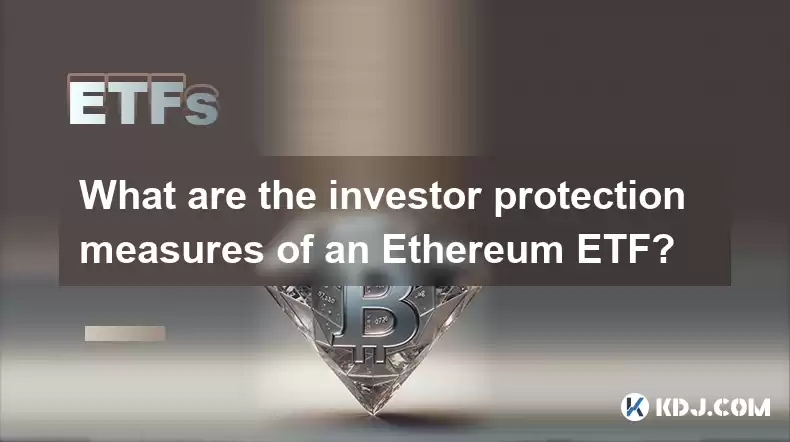
Key Points of Ethereum ETF Investor Protection Measures
- Regulatory Framework
- Transaction Transparency
- Custody and Storage
- Market Surveillance
- Investor Education
Comprehensive Overview of Ethereum ETF Investor Protection Measures
1. Regulatory Framework
SEC Oversight: Ethereum ETFs, like other ETFs, are subject to oversight by the U.S. Securities and Exchange Commission (SEC). The SEC ensures that ETFs comply with all applicable regulations, including:
- Disclosure requirements, providing investors with accurate and timely information about the ETF's holdings, risks, and fees
- Restrictions on investments, limiting the types of assets that ETFs can hold to protect investors from undue risk
- Market manipulation rules, preventing unethical practices that could harm investors
Compliance with Exchange Rules: Ethereum ETFs are also listed on exchanges that have their own rules and regulations designed to protect investors. These rules may include:
- Listing requirements, ensuring that ETFs meet certain criteria before they can be traded on an exchange
- Trading restrictions, such as limits on short selling or restrictions on trading during volatile market conditions
- Market monitoring, allowing exchanges to detect and address potential violations of their rules
2. Transaction Transparency
- Real-Time Reporting: Ethereum ETF transactions are typically reported to a central depository in real time. This provides transparency to investors about the trading activity in an ETF and enables regulators to monitor trading patterns for potential irregularities.
- Audit Trails: Detailed records of all transactions are maintained, allowing regulators and auditors to track the movement of Ethereum tokens in and out of an ETF. This helps detect any unauthorized activity or fraud.
3. Custody and Storage
- Third-Party Safekeeping: The Ethereum tokens held by an ETF are typically stored with a qualified custodian. This custodian may be a bank or specialized cryptocurrency custodian who is responsible for safeguarding the tokens and ensuring they are not accessible to unauthorized individuals.
- Security Protocols: Custodians employ robust security measures, such as offline storage, encryption, and access controls, to protect Ethereum tokens from theft, loss, or unauthorized access.
4. Market Surveillance
- Automated Systems: Exchanges and regulators use automated systems to monitor trading activity in Ethereum ETFs for unusual patterns. These systems can detect suspicious activity, such as excessive volatility or large buy or sell orders, which could indicate potential market manipulation or other violations.
- Human Monitoring: Regulators also conduct manual reviews of trading activity to identify any potential issues that automated systems may miss. This can involve analyzing data, reviewing trading records, and conducting interviews with market participants.
5. Investor Education
- Disclosure Documents: Ethereum ETFs provide investors with comprehensive disclosure documents that explain the ETF's objectives, risks, and fees. These documents help investors make informed decisions about whether an Ethereum ETF is suitable for their investment portfolio.
- Investor Education Programs: Some exchanges and ETF issuers offer educational programs to help investors understand how Ethereum ETFs work and how to invest in them. These programs may include webinars, online resources, and investor guides.
FAQs
Q: What is the role of third-party custodians in protecting Ethereum in ETFs?
A: Third-party custodians hold and safeguard the Ethereum tokens held by an ETF, providing an additional layer of security to protect investors' assets from theft or unauthorized access.
Q: How do automated systems help protect investors in Ethereum ETFs?
A: Automated systems monitor trading activity in Ethereum ETFs for suspicious patterns that could indicate potential market manipulation or other violations. This helps regulators detect and address potential issues promptly.
Q: What information is included in the disclosure documents for Ethereum ETFs?
A: Disclosure documents for Ethereum ETFs provide investors with comprehensive information about the ETF's objectives, risks, fees, and investment strategies.
Q: Are Ethereum ETFs safe for retail investors?
A: While Ethereum ETFs generally offer some level of investor protection through regulatory oversight and other measures, it is important for retail investors to carefully consider the risks and do their own research before investing in any Ethereum ETF.
Disclaimer:info@kdj.com
The information provided is not trading advice. kdj.com does not assume any responsibility for any investments made based on the information provided in this article. Cryptocurrencies are highly volatile and it is highly recommended that you invest with caution after thorough research!
If you believe that the content used on this website infringes your copyright, please contact us immediately (info@kdj.com) and we will delete it promptly.
- Cryptocurrency, Altcoins, and Profit Potential: Navigating the Wild West
- 2025-08-04 14:50:11
- Blue Gold & Crypto: Investing Disruption in Precious Metals
- 2025-08-04 14:30:11
- Japan, Metaplanet, and Bitcoin Acquisition: A New Era of Corporate Treasury?
- 2025-08-04 14:30:11
- Coinbase's Buy Rating & Bitcoin's Bold Future: A Canaccord Genuity Perspective
- 2025-08-04 14:50:11
- Coinbase's Buy Rating Maintained by Rosenblatt Securities: A Deep Dive
- 2025-08-04 14:55:11
- Cryptos, Strategic Choices, High Returns: Navigating the Meme Coin Mania
- 2025-08-04 14:55:11
Related knowledge
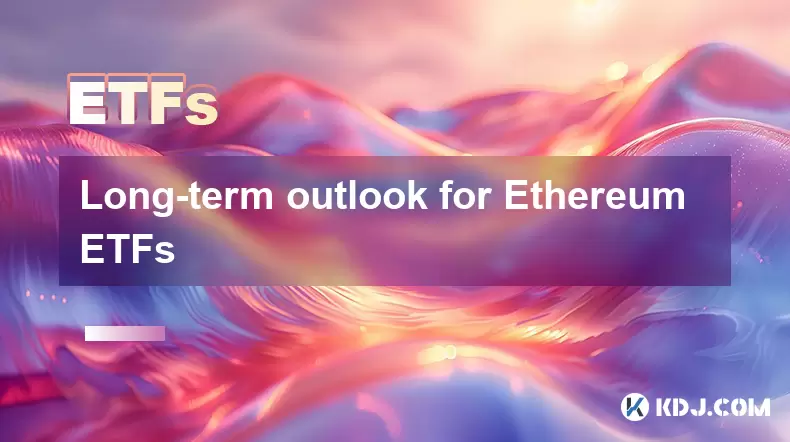
Long-term outlook for Ethereum ETFs
Jul 22,2025 at 06:42am
What Exactly Is an Ethereum ETF?An Ethereum Exchange-Traded Fund (ETF) is a financial product that tracks the price of Ethereum (ETH) and is traded on...
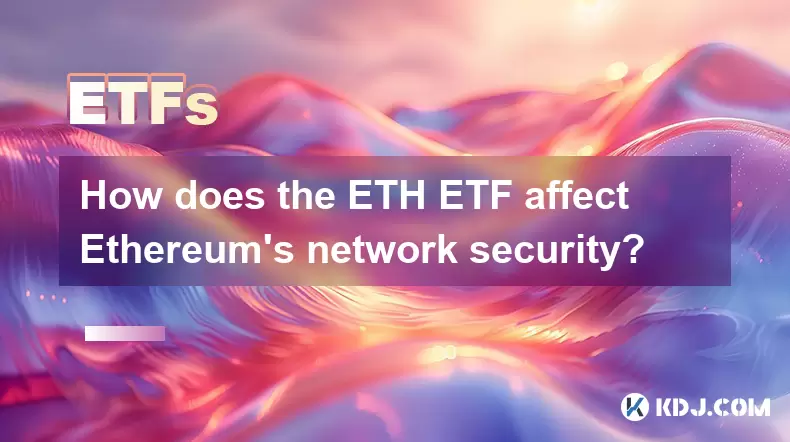
How does the ETH ETF affect Ethereum's network security?
Jul 17,2025 at 01:29pm
Understanding the ETH ETF ConceptAn Ethereum Exchange-Traded Fund (ETH ETF) is a financial product that allows investors to gain exposure to Ethereum ...
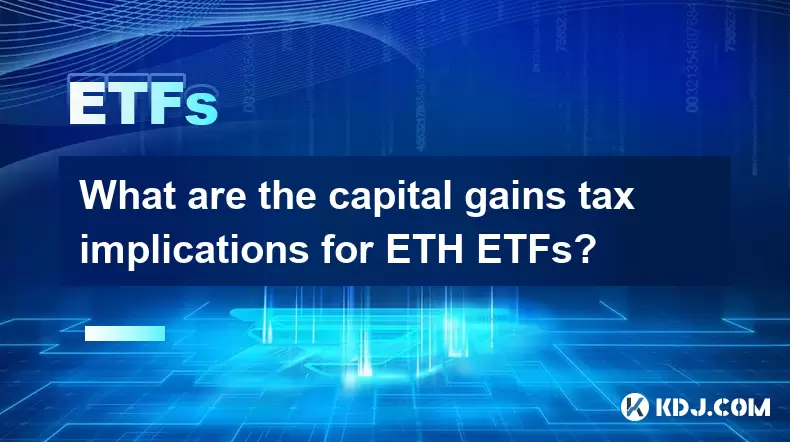
What are the capital gains tax implications for ETH ETFs?
Jul 18,2025 at 08:00am
Understanding Capital Gains Tax in Cryptocurrency InvestmentsCapital gains tax is a tax imposed on the profit realized from the sale of an asset that ...
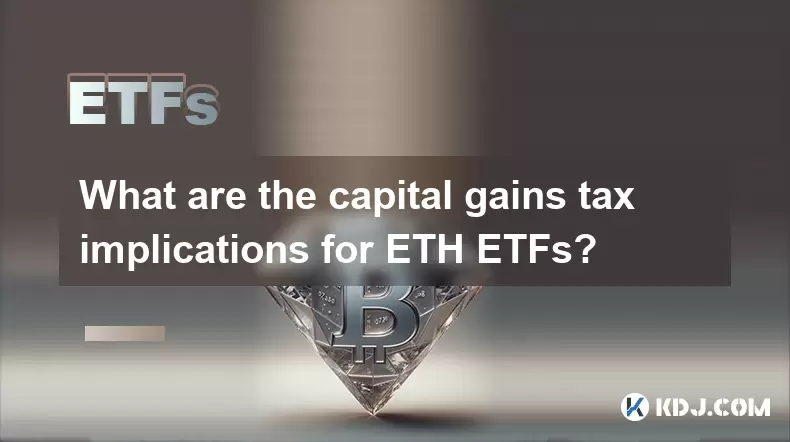
What are the capital gains tax implications for ETH ETFs?
Jul 21,2025 at 11:14am
Understanding ETH ETFs and Their TaxationAn Ethereum Exchange-Traded Fund (ETH ETF) allows investors to gain exposure to Ethereum without directly own...
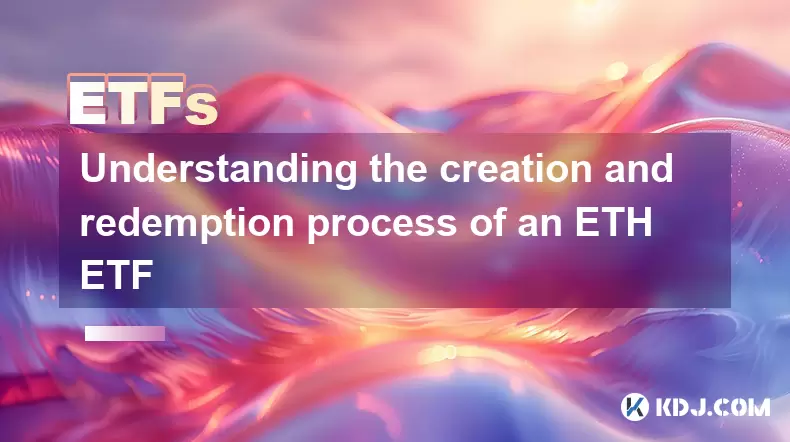
Understanding the creation and redemption process of an ETH ETF
Jul 19,2025 at 07:36am
What is an ETH ETF?An ETH ETF (Ethereum Exchange-Traded Fund) is a financial product designed to track the price of Ethereum without requiring investo...

How to analyze which ETH ETF is the best choice
Jul 19,2025 at 05:01pm
Understanding ETH ETFs and Their RelevanceEthereum Exchange-Traded Funds (ETFs) have emerged as a popular investment vehicle for those seeking exposur...

Long-term outlook for Ethereum ETFs
Jul 22,2025 at 06:42am
What Exactly Is an Ethereum ETF?An Ethereum Exchange-Traded Fund (ETF) is a financial product that tracks the price of Ethereum (ETH) and is traded on...

How does the ETH ETF affect Ethereum's network security?
Jul 17,2025 at 01:29pm
Understanding the ETH ETF ConceptAn Ethereum Exchange-Traded Fund (ETH ETF) is a financial product that allows investors to gain exposure to Ethereum ...

What are the capital gains tax implications for ETH ETFs?
Jul 18,2025 at 08:00am
Understanding Capital Gains Tax in Cryptocurrency InvestmentsCapital gains tax is a tax imposed on the profit realized from the sale of an asset that ...

What are the capital gains tax implications for ETH ETFs?
Jul 21,2025 at 11:14am
Understanding ETH ETFs and Their TaxationAn Ethereum Exchange-Traded Fund (ETH ETF) allows investors to gain exposure to Ethereum without directly own...

Understanding the creation and redemption process of an ETH ETF
Jul 19,2025 at 07:36am
What is an ETH ETF?An ETH ETF (Ethereum Exchange-Traded Fund) is a financial product designed to track the price of Ethereum without requiring investo...

How to analyze which ETH ETF is the best choice
Jul 19,2025 at 05:01pm
Understanding ETH ETFs and Their RelevanceEthereum Exchange-Traded Funds (ETFs) have emerged as a popular investment vehicle for those seeking exposur...
See all articles

























































































